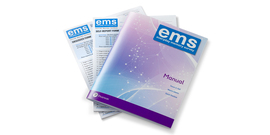Rivermead Behavioural Memory Test - Third Edition
RBMT-3- Quickly assess everyday memory
Choose from our formats
-
Kits
Starter & complete kits, print & digital
1 option
From AUD 1,191.85 -
Test forms & reports
Booklets, record forms, answer sheets, report usages & subscriptions
1 option
From AUD 206.47 -
All products
All tests and materials offered for RBMT-3
2 options
From AUD 206.47
-
RBMT-3 Complete Kit
9780749134761 Qualification Level BIncludes
Manual
Record Forms (Pack of 25)
2x Stimulus Books
Alarm
Timer
Novel Task Stimulus Material
Storycard
Message EnvelopeWARNING: CHOKING HAZARD - Small parts. Not for children under 3 years.
-
RBMT-3 Record Forms
9780749134624 Qualification Level BPack of 25
Overview
- Publication date:
- 2008
- Completion time:
- 25 to 30 minutes
- Administration:
- Individual; Manual scoring
- Age range:
- Adult
- Qualification level:
- B
Product Details
The original Rivermead Behavioural Memory Test (RBMT) was published in 1985 (Wilson, Cockburn, & Baddeley, 1985). It was designed to (a) predict everyday memory problems in people with acquired, non-progressive brain injury and (b) monitor change over time.
The RBMT comprises tasks analogous to everyday situations that appear to be troublesome for memory impaired patients. Numerous studies since the publication of the RBMT have shown the clinical utility of this tool for different patient populations.
In 1999 the Rivermead Behavioural Memory Test – Extended Version (RBMT-E) was published. This version was developed to create an instrument that could detect mild memory deficits. In order to enhance the test’s sensitivity the level of difficulty of the test was increased by doubling the amount of material to be remembered.
Although the RBMT and the RBMT-E proved useful in the assessment of memory, some changes were required to increase the clinical effectiveness of these tests.
In 2003 the RBMT-II was published. This was an update of materials but did not include further development of subtest items or restandardisation of the test.
The new RBMT-3 was developed with the goal of updating the clinical applicability and utility of the tool. A number of changes were made to the tool to meet this goal.
A larger normative sample has been collected than previous versions of the test. It was thought by the authors that some of the subtests in the currently used versions can prove to be a little too difficult (RBMT-E) or a little too easy (RBMT) for certain patients. The RBMT-3 sought to make adjustments in item difficulty to meet this need.
On the Face Recognition subtests of the original RBMT the ethnic diversity of the local population was not adequately represented. Therefore, the new version includes more pictures of people from various ethnic backgrounds to ensure the test is appropriate for multi-racial societies such as Australia and New Zealand.
The stories used to assess a person’s ability to absorb verbal information have also been updated. A new subtest – the Novel Task has been added. This novel task assesses the ability of a person to learn a new skill, an accomplishment critical for everyday functioning.
An intervention chapter has been added to improve the clinical utility of the tool.
Finally, given that the RBMT-E was published in 1999, a revision of the normative data is required. We stay close to the original structure of the RBMT as this has proved both valid and sensitive to everyday memory problems in people with brain injury. It is hoped that this new version of the RBMT will enhance its function as both a clinical and a research tool.


